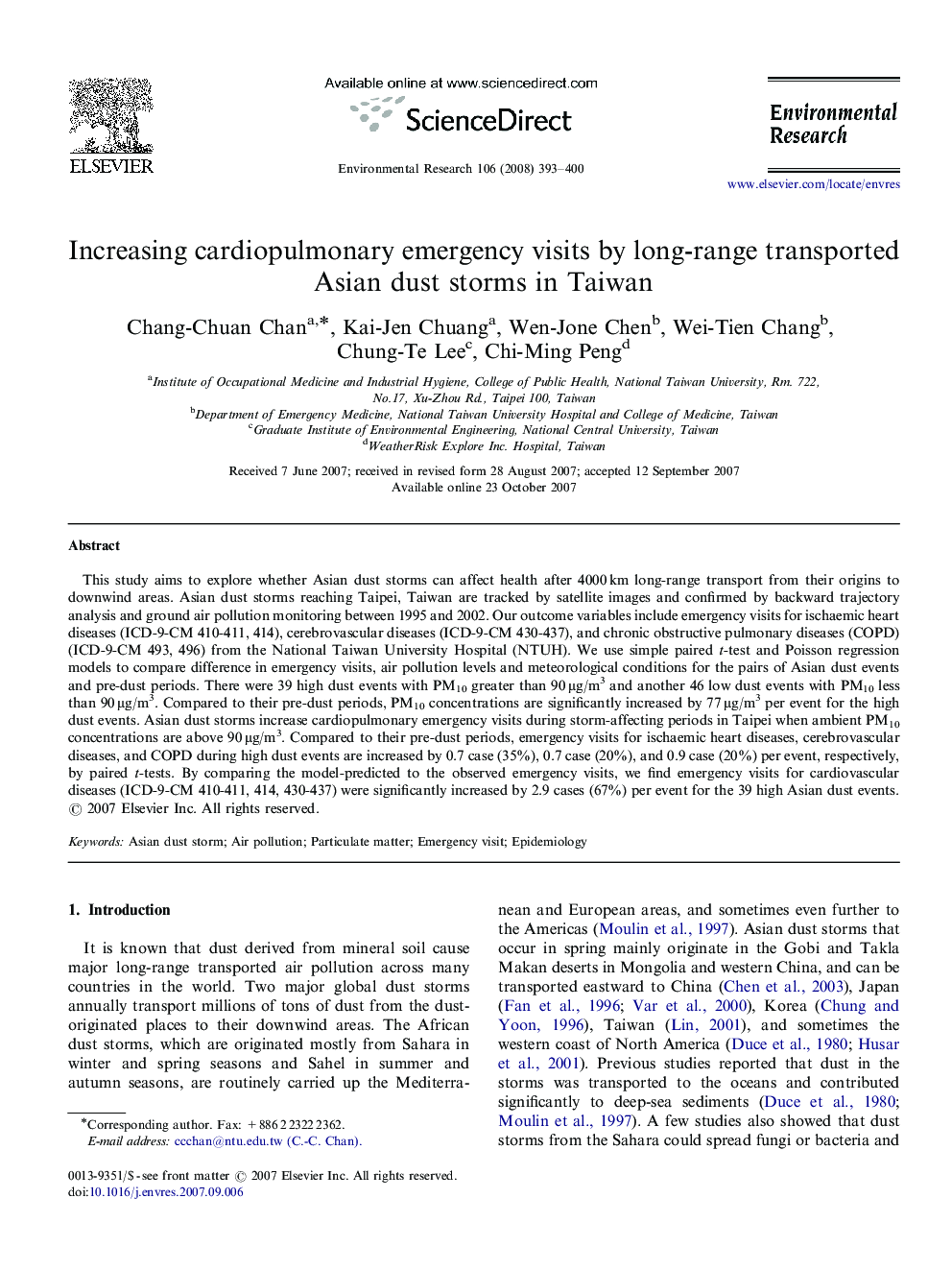| Article ID | Journal | Published Year | Pages | File Type |
|---|---|---|---|---|
| 4470770 | Environmental Research | 2008 | 8 Pages |
This study aims to explore whether Asian dust storms can affect health after 4000 km long-range transport from their origins to downwind areas. Asian dust storms reaching Taipei, Taiwan are tracked by satellite images and confirmed by backward trajectory analysis and ground air pollution monitoring between 1995 and 2002. Our outcome variables include emergency visits for ischaemic heart diseases (ICD-9-CM 410-411, 414), cerebrovascular diseases (ICD-9-CM 430-437), and chronic obstructive pulmonary diseases (COPD) (ICD-9-CM 493, 496) from the National Taiwan University Hospital (NTUH). We use simple paired t-test and Poisson regression models to compare difference in emergency visits, air pollution levels and meteorological conditions for the pairs of Asian dust events and pre-dust periods. There were 39 high dust events with PM10 greater than 90 μg/m3 and another 46 low dust events with PM10 less than 90 μg/m3. Compared to their pre-dust periods, PM10 concentrations are significantly increased by 77 μg/m3 per event for the high dust events. Asian dust storms increase cardiopulmonary emergency visits during storm-affecting periods in Taipei when ambient PM10 concentrations are above 90 μg/m3. Compared to their pre-dust periods, emergency visits for ischaemic heart diseases, cerebrovascular diseases, and COPD during high dust events are increased by 0.7 case (35%), 0.7 case (20%), and 0.9 case (20%) per event, respectively, by paired t-tests. By comparing the model-predicted to the observed emergency visits, we find emergency visits for cardiovascular diseases (ICD-9-CM 410-411, 414, 430-437) were significantly increased by 2.9 cases (67%) per event for the 39 high Asian dust events.
